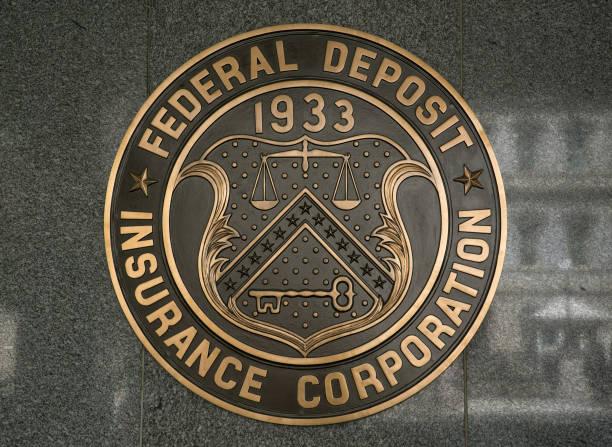Understanding the Federal Deposit Insurance Corporation: A Pillar of Financial Security
How the FDIC Shields Depositors During Economic Fluctuations
In times of economic instability, the Federal Deposit Insurance Corporation (FDIC) serves as a vital protector for millions of Americans by guaranteeing the safety of their bank deposits. By providing insurance coverage up to $250,000 per depositor at each insured bank, the FDIC helps prevent mass withdrawals and bank runs that could destabilize the financial system. Its vigilant oversight includes continuous evaluation of banks’ financial conditions, enabling timely intervention to protect both depositors and the broader economy.
Core services that uphold depositor security include:
- Insurance for various deposit accounts such as checking, savings, money market accounts, and certificates of deposit (CDs)
- Swift management and resolution of bank failures to safeguard insured funds
- Ongoing risk analysis and stress testing of member banks to identify vulnerabilities
- Educational initiatives to increase public understanding of deposit insurance and banking rights
| FDIC Function | Role During Financial Uncertainty |
|---|---|
| Deposit Insurance | Protects deposits up to $250,000 per depositor |
| Bank Supervision | Mitigates risk of institutional failures |
| Failure Management | Ensures depositor funds are secured during closures |
| Public Outreach | Improves depositor knowledge and confidence |
Comprehensive Coverage: What FDIC Insurance Means for Your Funds
When you place your money in an FDIC-insured bank, your deposits are safeguarded by a federal guarantee that protects up to $250,000 per depositor, per ownership category, at each institution. This insurance activates if the bank encounters financial failure, ensuring your money remains intact without requiring any action on your part. Covered accounts include checking, savings, money market deposit accounts, and CDs.
It is essential to recognize the boundaries of this protection. For example, investment products such as stocks, bonds, and mutual funds, as well as insurance policies, safe deposit box contents, and funds held in foreign branches, are not insured by the FDIC.
| Account Category | Insurance Limit |
|---|---|
| Individual Accounts | $250,000 |
| Joint Accounts (per owner) | $250,000 |
| Retirement Accounts (e.g., IRAs) | $250,000 |
What to Do If Your Bank Closes: FDIC’s Step-by-Step Guidance
In the event your bank shuts down unexpectedly, the FDIC acts promptly to protect your insured deposits. The first step is to verify the bank’s closure through the FDIC’s official website or customer service hotline, rather than relying on unofficial sources. After confirmation, gather your account statements and deposit records to facilitate a smooth claims process. Typically, the FDIC restores access to insured funds within one to three business days, either by transferring accounts to a temporary “bridge bank” or by arranging deposits at another insured institution.
To protect your finances during this process, consider the following:
- Confirm your coverage: Utilize the FDIC’s Electronic Deposit Insurance Estimator (EDIE) tool to verify your insurance status.
- Stay informed: Watch for official communications from the FDIC or your bank outlining next steps.
- Exercise caution: Avoid attempting withdrawals from closed branches or unknown third parties.
| Step | Recommended Action | Typical Timeline |
|---|---|---|
| 1 | Verify bank closure via FDIC | Within 24 hours |
| 2 | Check deposit insurance coverage | Immediately |
| 3 | Access insured funds | 1–3 business days |
| 4 | Contact FDIC for assistance if needed | Ongoing |
Strategies to Optimize Your FDIC Deposit Insurance Protection
Maximizing FDIC insurance coverage requires a clear understanding of how deposit insurance limits apply across different banks and account ownership types. Since the $250,000 limit applies per depositor, per insured bank, diversifying your funds across multiple institutions can increase your total insured amount. Additionally, leveraging various account categories—such as individual, joint, retirement, and trust accounts—can further expand your protection.
Effective approaches include:
- Opening joint accounts to multiply coverage based on the number of account holders
- Establishing revocable trust accounts, which can increase insured amounts depending on the number of beneficiaries
- Converting eligible accounts into retirement accounts to benefit from separate insurance limits
- Regularly reviewing your accounts and insurance status using tools like the FDIC’s BankFind
| Account Type | Standard Insurance Limit | Coverage Enhancement Strategy |
|---|---|---|
| Individual | $250,000 | One per bank |
| Joint | $250,000 per owner | Multiply by number of owners |
| Retirement | $250,000 | Separate from other accounts |
| Trust | Varies by beneficiaries | Increase coverage through trust design |
Conclusion: The FDIC’s Enduring Commitment to Financial Stability
In an ever-evolving financial environment, the Federal Deposit Insurance Corporation remains a fundamental institution ensuring the resilience of the U.S. banking system. By providing deposit insurance, supervising banks, and fostering depositor confidence, the FDIC protects consumers and supports economic stability. Staying informed about FDIC policies and utilizing its resources is essential for anyone seeking to safeguard their financial assets. For the most current information and tools, visit FDIC.gov.







